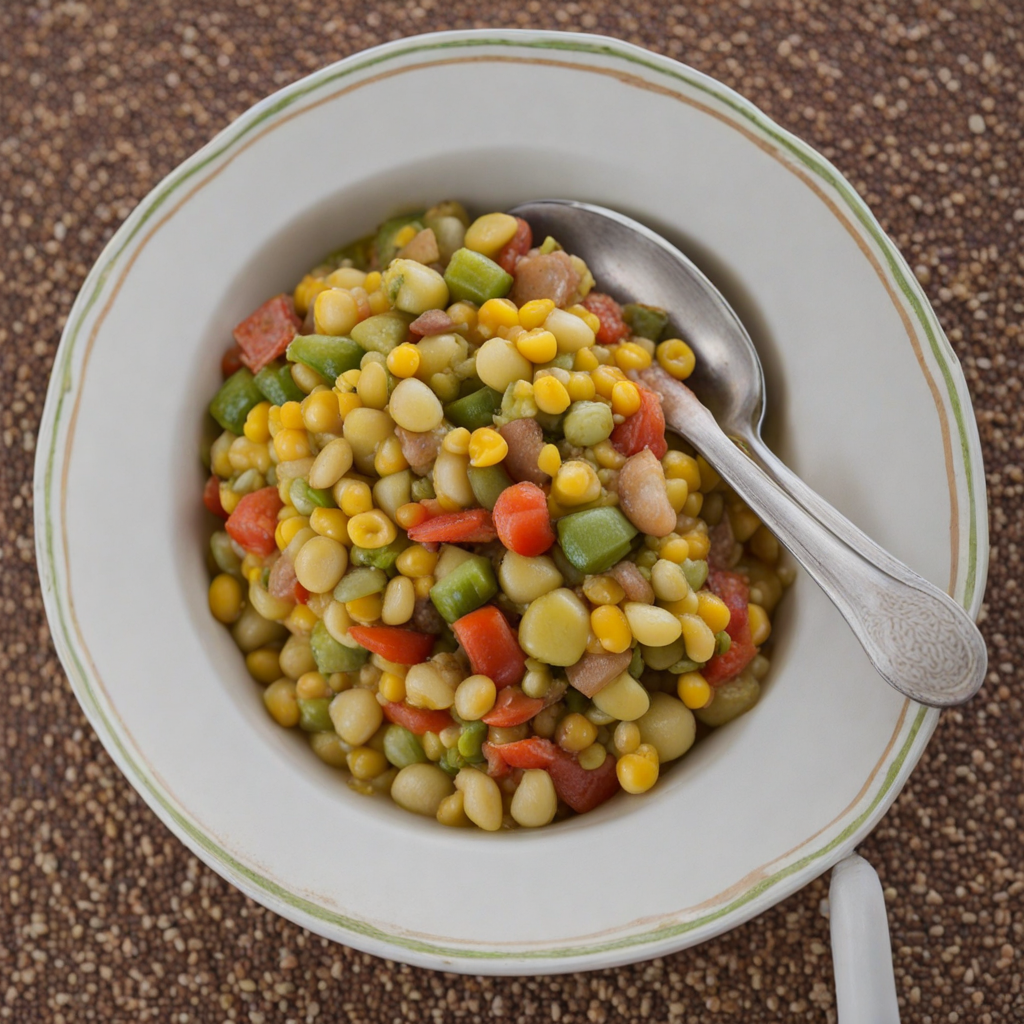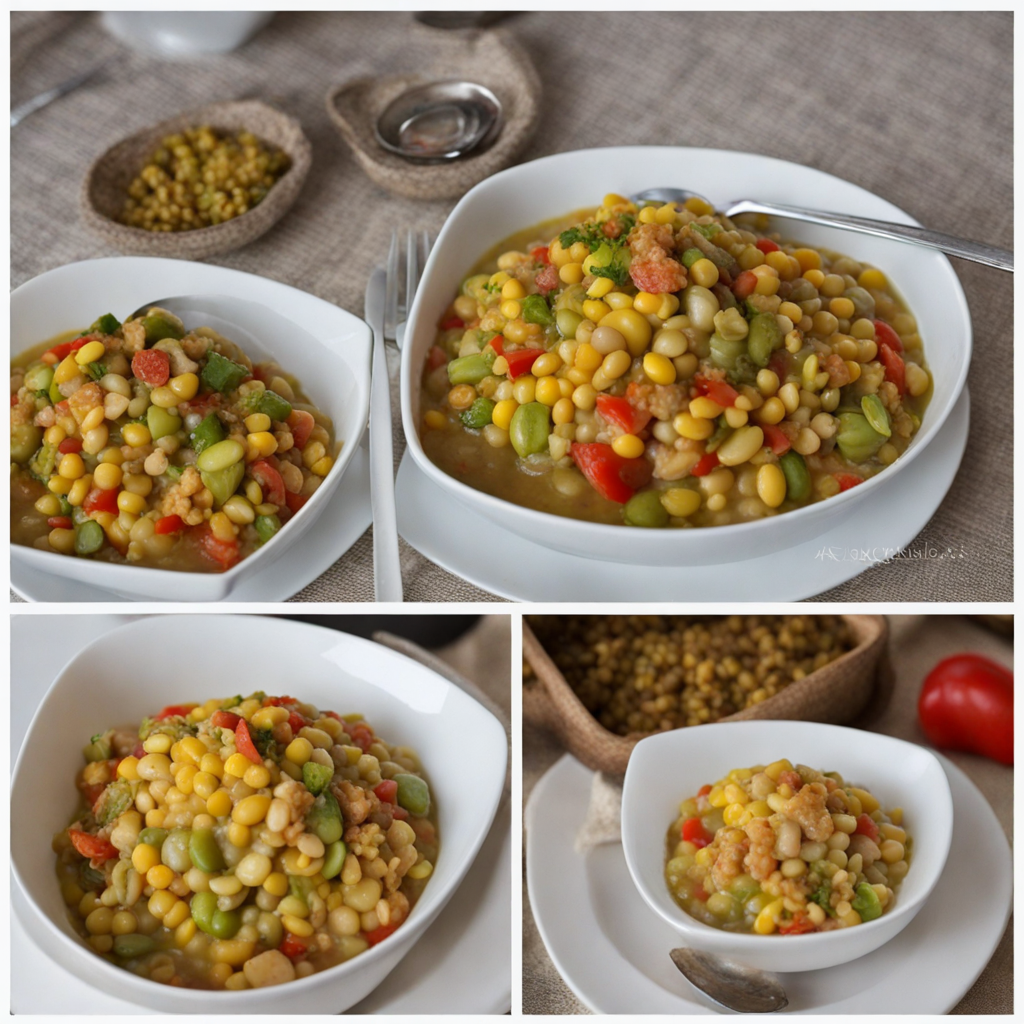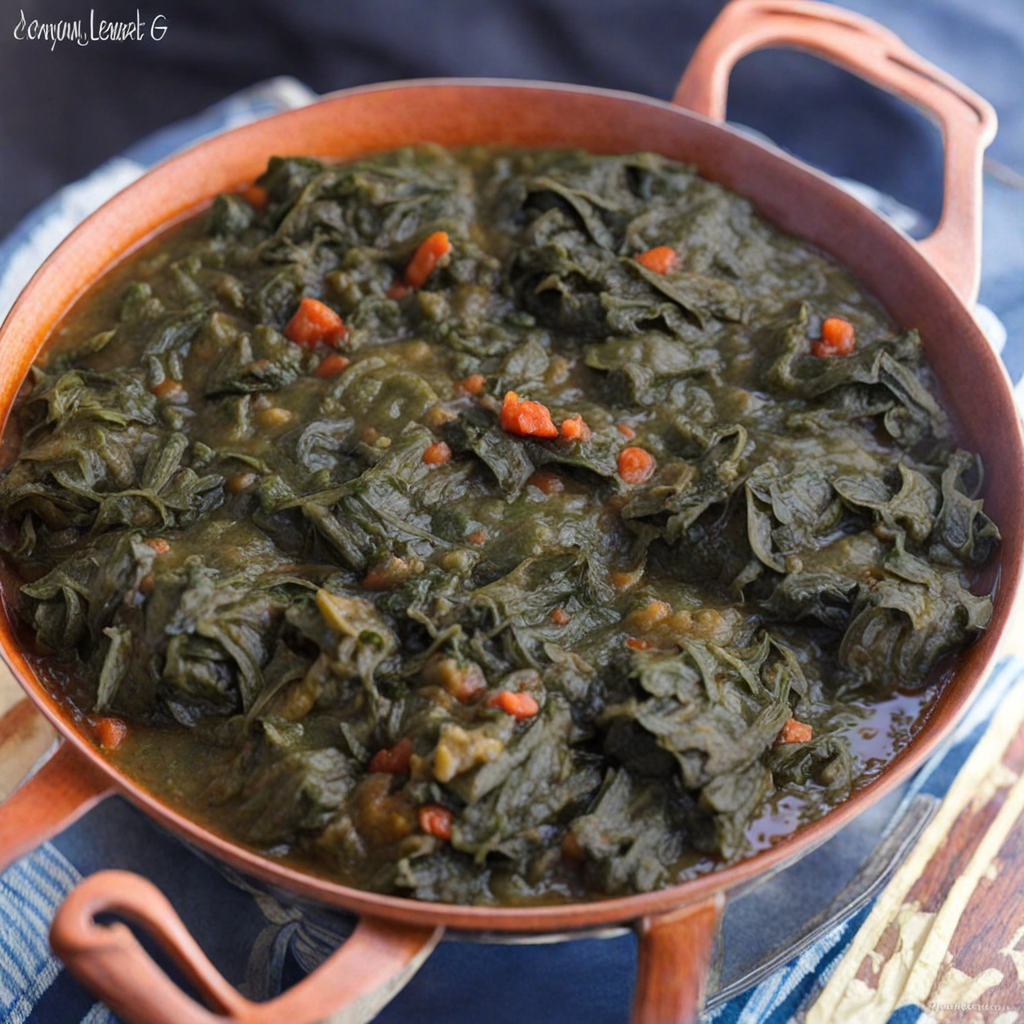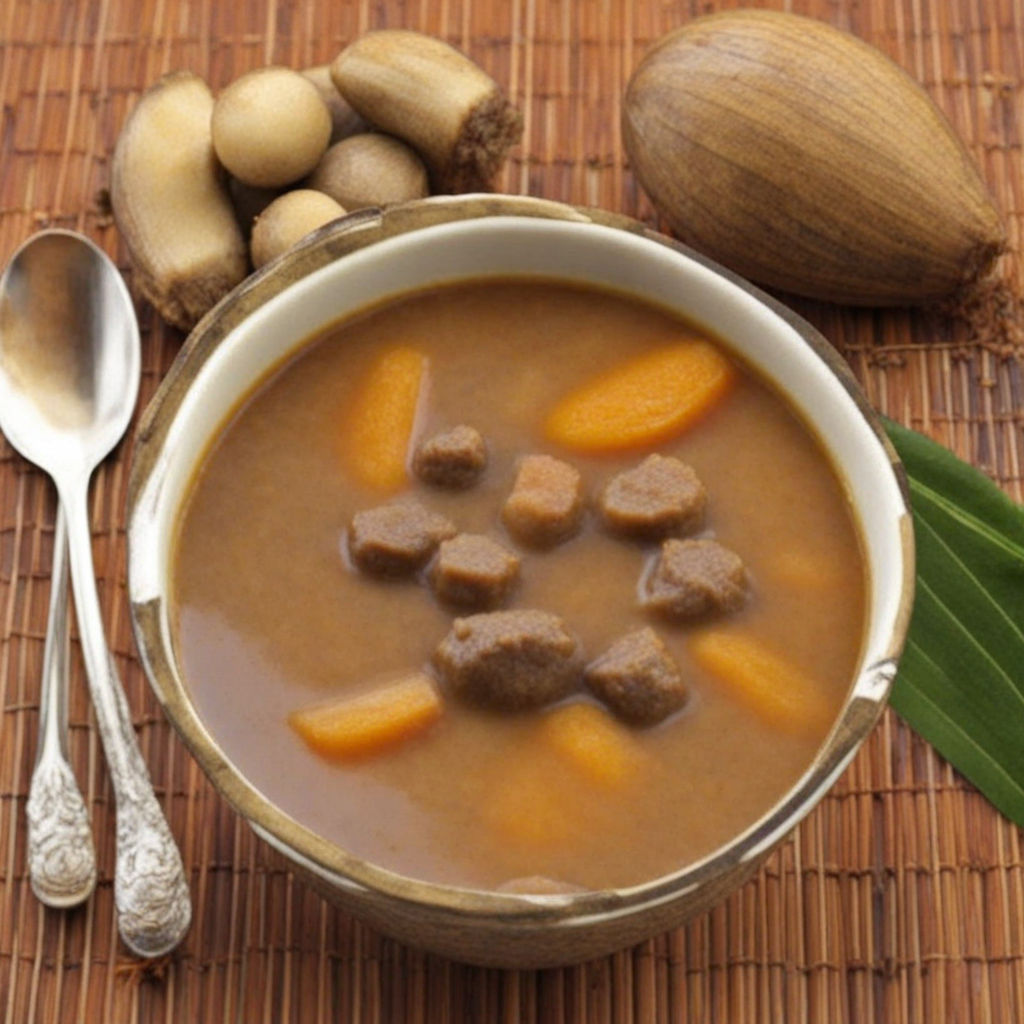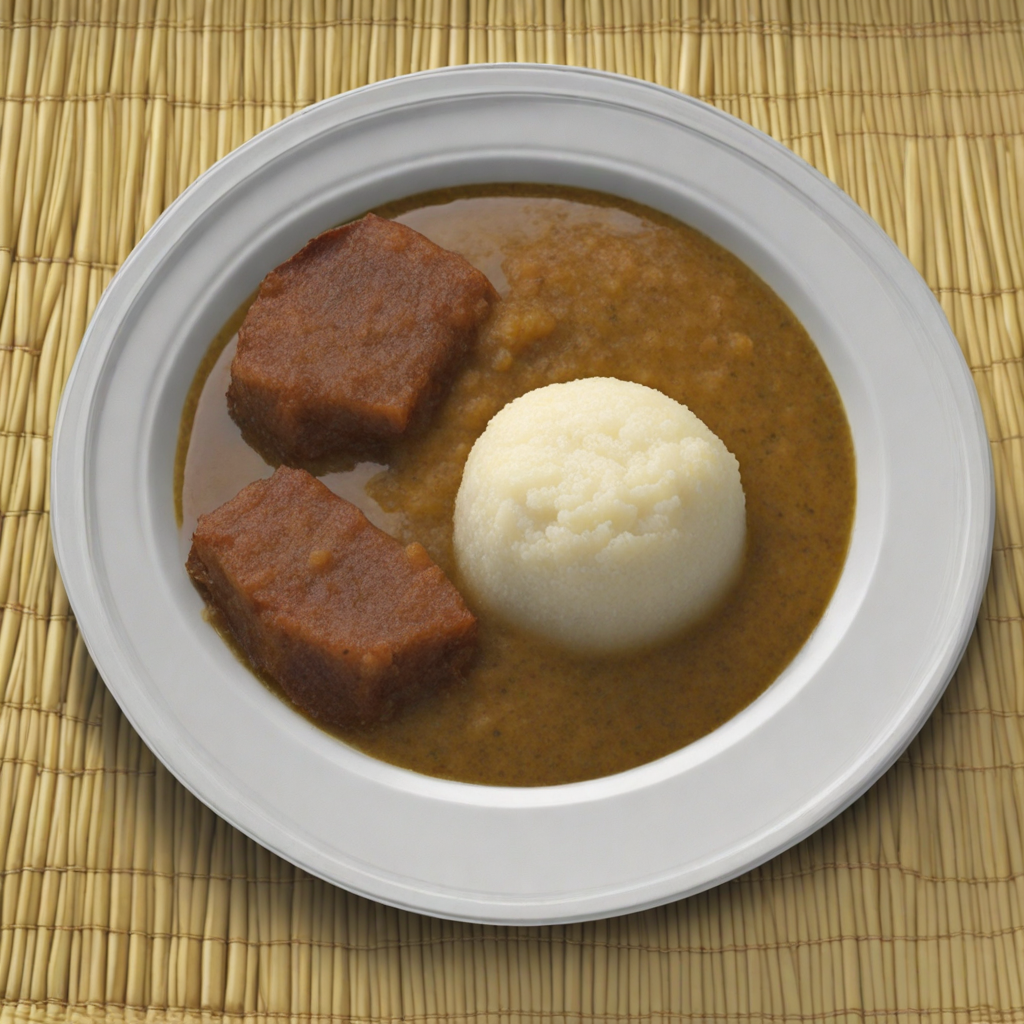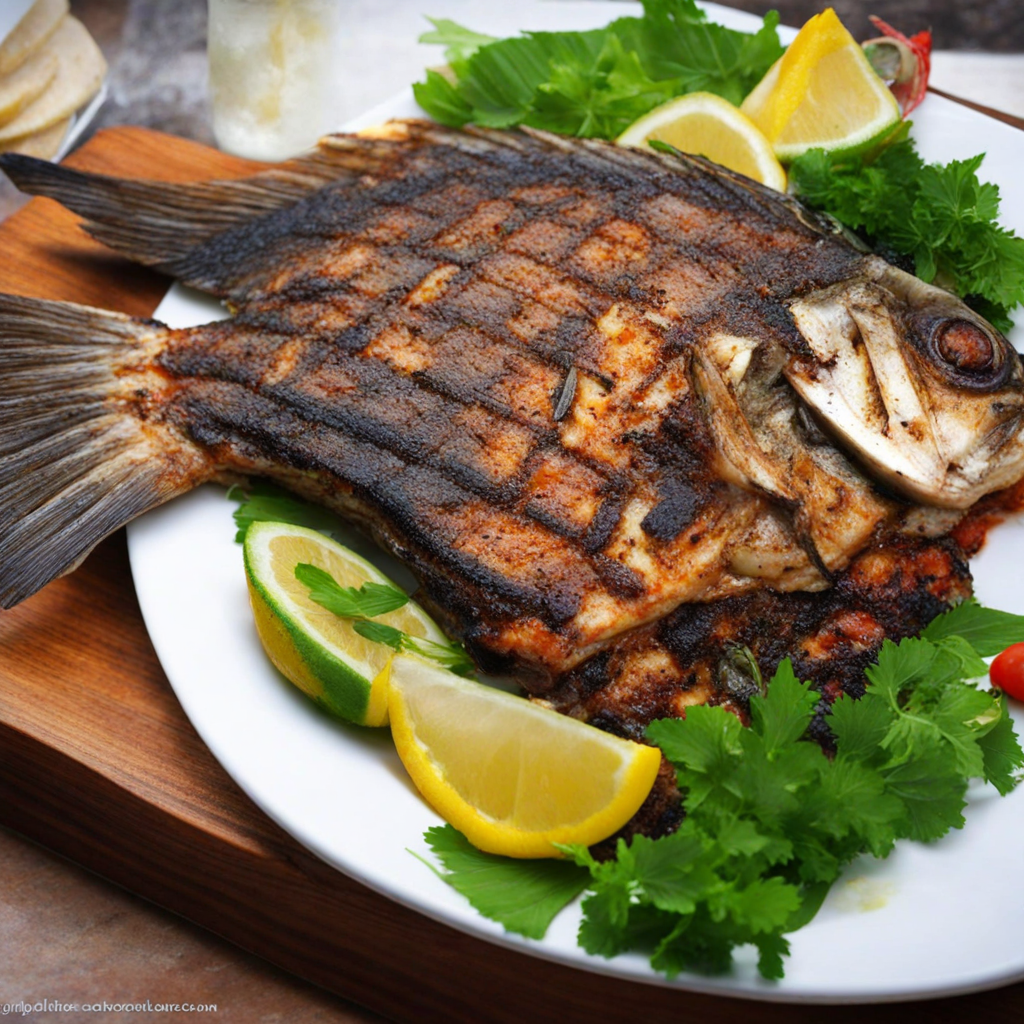Succotash
Succotash, a vibrant and hearty dish originating from Equatorial Guinea, showcases the rich agricultural bounty of the region. This colorful medley typically combines fresh corn and a variety of legumes, such as lima beans or black-eyed peas, which are staples in the local diet. The sweet, crunchy corn pairs beautifully with the creamy texture of the beans, creating a delightful contrast that tantalizes the palate. Often enhanced with aromatic vegetables like bell peppers, onions, and tomatoes, Succotash bursts with flavors that reflect the lush landscapes of Equatorial Guinea. In traditional preparations, Succotash may also include a variety of locally available ingredients, such as okra or plantains, adding unique textures and flavors to the dish. Seasoned with herbs and spices like garlic, coriander, and even a hint of chili, this dish can be customized to suit different tastes, making it a versatile option for any meal. The inclusion of palm oil or coconut milk in some variations provides a rich, creamy finish that elevates the overall experience, creating a comforting and nourishing dish. Succotash is often enjoyed as a side dish or a main course, reflecting the communal dining culture in Equatorial Guinea. Served alongside grilled meats or fish, it brings a burst of color and nutrition to the table, making it not only a feast for the senses but also a wholesome option. Whether served at festive gatherings or as a comforting family meal, Succotash encapsulates the essence of Equatorial Guinean cuisine, inviting food lovers to embark on a culinary adventure filled with new tastes and textures.
How It Became This Dish
Succotash, a dish that has often been associated with Native American and Southern U.S. cuisine, has roots that extend far beyond these borders, including its intriguing connections to Equatorial Guinea. While the term "succotash" typically conjures images of corn and beans, the dish represents a fusion of culinary practices and ingredients that reflect the rich agricultural traditions of the region. Origins The origins of succotash can be traced back to the indigenous peoples of North America, particularly the Narragansett tribe of Rhode Island, who used the word "msickquatash," meaning "boiled corn." This dish traditionally consisted of a mixture of corn and beans, which were staples in the diets of many Native American tribes. However, the concept of combining legumes and grains or vegetables is not unique to North America; it is a practice that has been prevalent in many cultures worldwide for centuries. In Equatorial Guinea, the culinary landscape is shaped by a diverse array of ethnic groups, including the Fang, Bubi, and Ndowe, each contributing their own flavors and cooking methods. The use of corn and various legumes is common throughout the region, where these ingredients form the backbone of many traditional dishes. In Equatorial Guinea, the dish that parallels succotash may not carry the same name, but it shares a similar spirit: a harmonious blend of locally sourced ingredients that reflects the agricultural bounty of the land. Cultural Significance Succotash in Equatorial Guinea symbolizes community and sustenance, much like it does in its American counterparts. In many African cultures, food is a central aspect of community gatherings and cultural identity. The act of sharing a meal of succotash, or its equivalent, fosters social bonds and reinforces cultural traditions. Corn, beans, and legumes are often grown in family gardens and small plots, representing the connection between people and the land. The ingredients used in succotash vary greatly, reflecting the region's agricultural practices and seasonal availability. In Equatorial Guinea, corn is often complemented by beans such as cowpeas or black-eyed peas, as well as a variety of vegetables like okra, tomatoes, and peppers. The dish is typically seasoned with local spices and herbs, enhancing its flavor profile and nutritional value. In the context of Equatorial Guinean culture, food is not only about sustenance but also about heritage. Traditional cooking methods, often passed down through generations, play a critical role in preserving cultural identity. The preparation of succotash-like dishes often involves communal cooking practices, where family members come together to prepare food, share stories, and strengthen familial bonds. Development Over Time As global trade and colonialism reshaped foodways across the globe, the ingredients and preparation methods for succotash evolved. With the arrival of European colonizers in Africa, new ingredients were introduced, and traditional dishes began to incorporate these foreign elements while still honoring local customs. In Equatorial Guinea, the influence of Spanish colonization is evident in the culinary landscape. Ingredients such as rice and various spices became integrated into local cooking practices. The melding of these influences created a unique blend of flavors that can be seen in modern interpretations of succotash-like dishes. For instance, a contemporary version may include rice as a base, topped with a colorful array of vegetables and seasoned beans, reflecting both traditional African and Spanish culinary practices. In the United States, succotash underwent its own transformation, particularly during the 19th and 20th centuries, as it became a symbol of Southern cuisine. The American version of succotash typically features sweet corn and lima beans, often cooked together with bacon or ham for added flavor. This adaptation highlights the regional variations and the influence of African American culinary traditions, which incorporated ingredients that were readily available in their environments. The dish's popularity surged during the Great Depression, as it provided an economical and nourishing meal option for families struggling to make ends meet. Succotash became a staple in many households, symbolizing resourcefulness and resilience in the face of adversity. Modern Interpretations and Global Influence In the 21st century, succotash has seen a resurgence in popularity, both in its traditional forms and as a canvas for culinary innovation. Chefs around the world, inspired by the dish's rich history, are reinterpreting succotash to reflect modern tastes and global influences. In Equatorial Guinea, contemporary cooks are experimenting with new ingredients while still honoring the traditional roots of the dish. In the United States, succotash has evolved into a gourmet dish found in upscale restaurants, where chefs showcase seasonal vegetables and artisanal ingredients, often elevating the dish to new culinary heights. The emphasis on farm-to-table practices has also led to a renewed interest in local and sustainable food sourcing, aligning with the original spirit of succotash as a celebration of agricultural abundance. Moreover, the global movement towards plant-based diets has further popularized succotash-like dishes, as they provide a nutritious and flavorful option for those seeking vegetarian or vegan meals. The versatility of the ingredients allows for endless variations, ensuring that succotash remains relevant in contemporary cuisine. Conclusion Succotash, while often associated with American cuisine, has an extensive and multifaceted history that transcends geographical boundaries. Its roots in Equatorial Guinea reflect the agricultural practices and cultural traditions of the region, demonstrating how food can serve as a bridge between diverse cultures. As the dish continues to evolve, it remains a testament to the power of culinary heritage, community, and the enduring significance of sharing a meal—a legacy that spans generations and continents. Whether enjoyed in its traditional form or reimagined by modern chefs, succotash stands as a delicious reminder of the interconnectedness of our global foodways.
You may like
Discover local flavors from Equatorial Guinea


